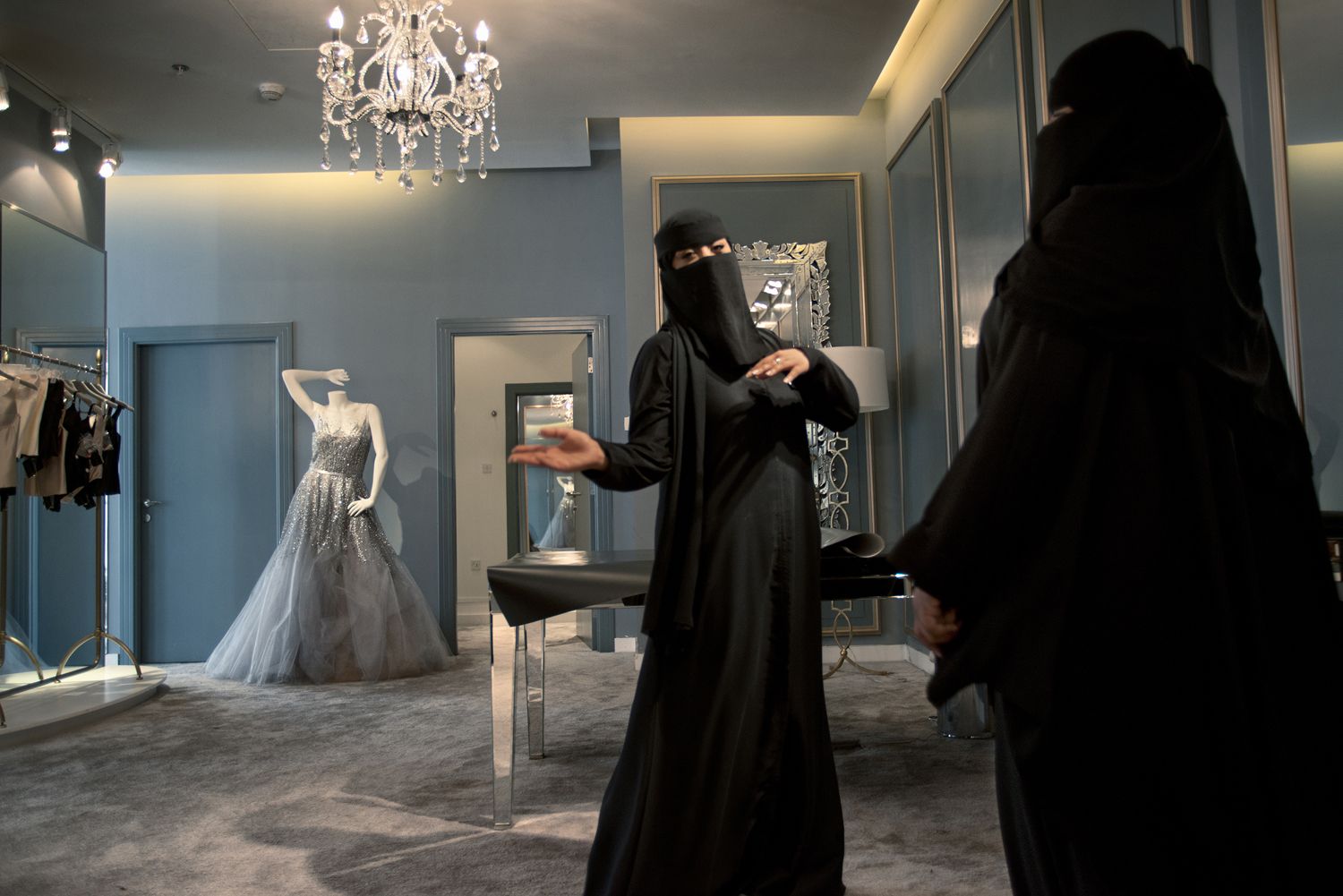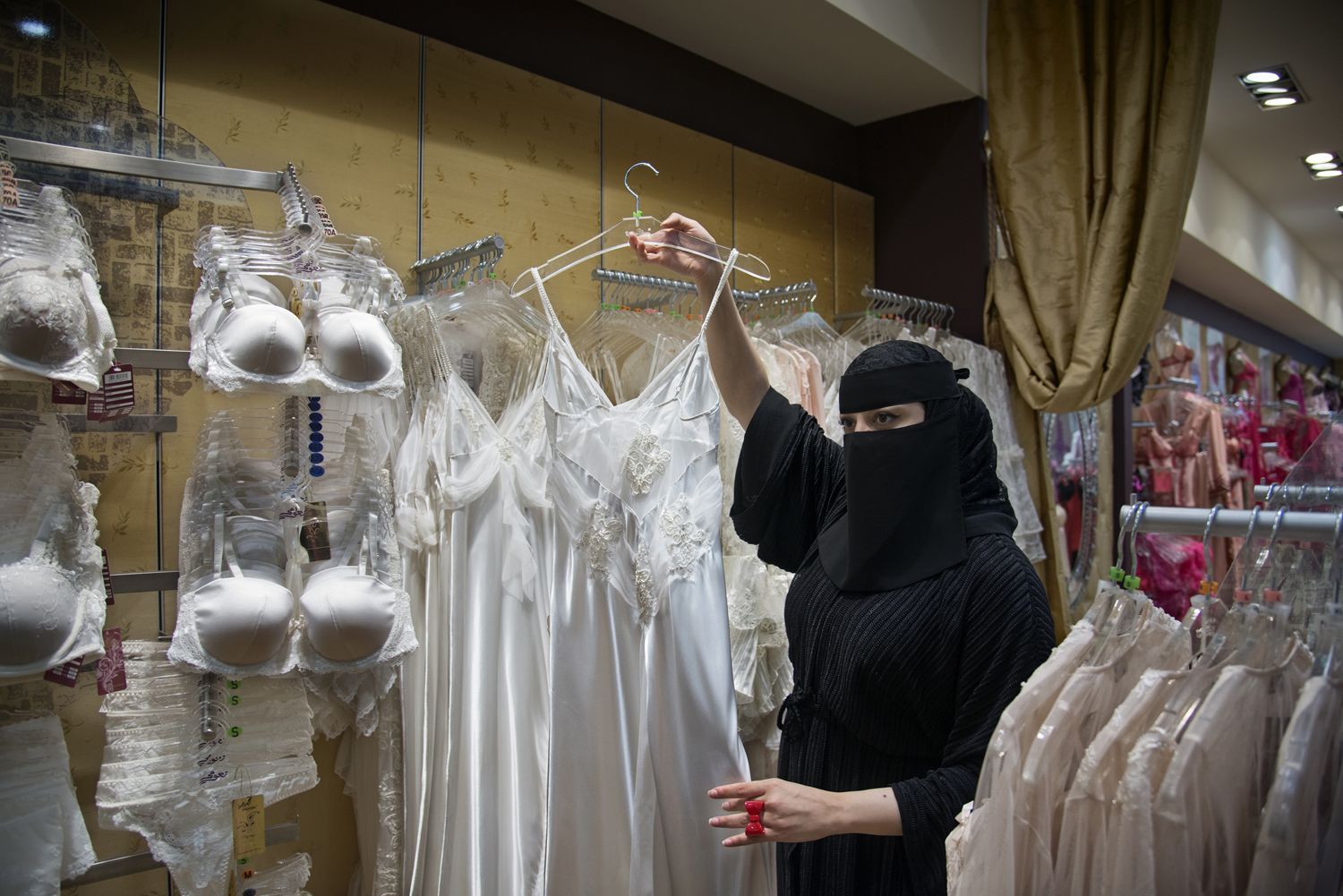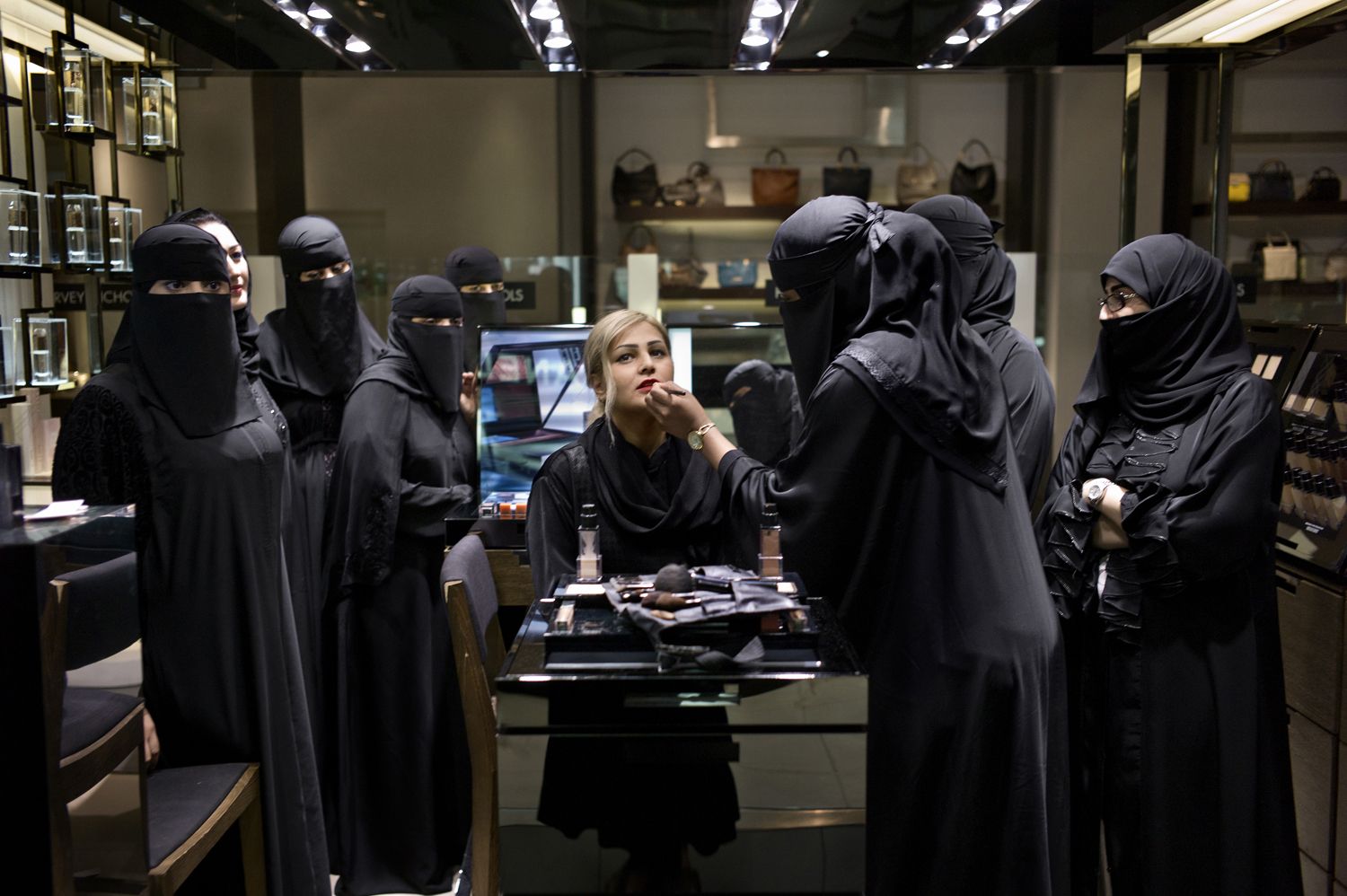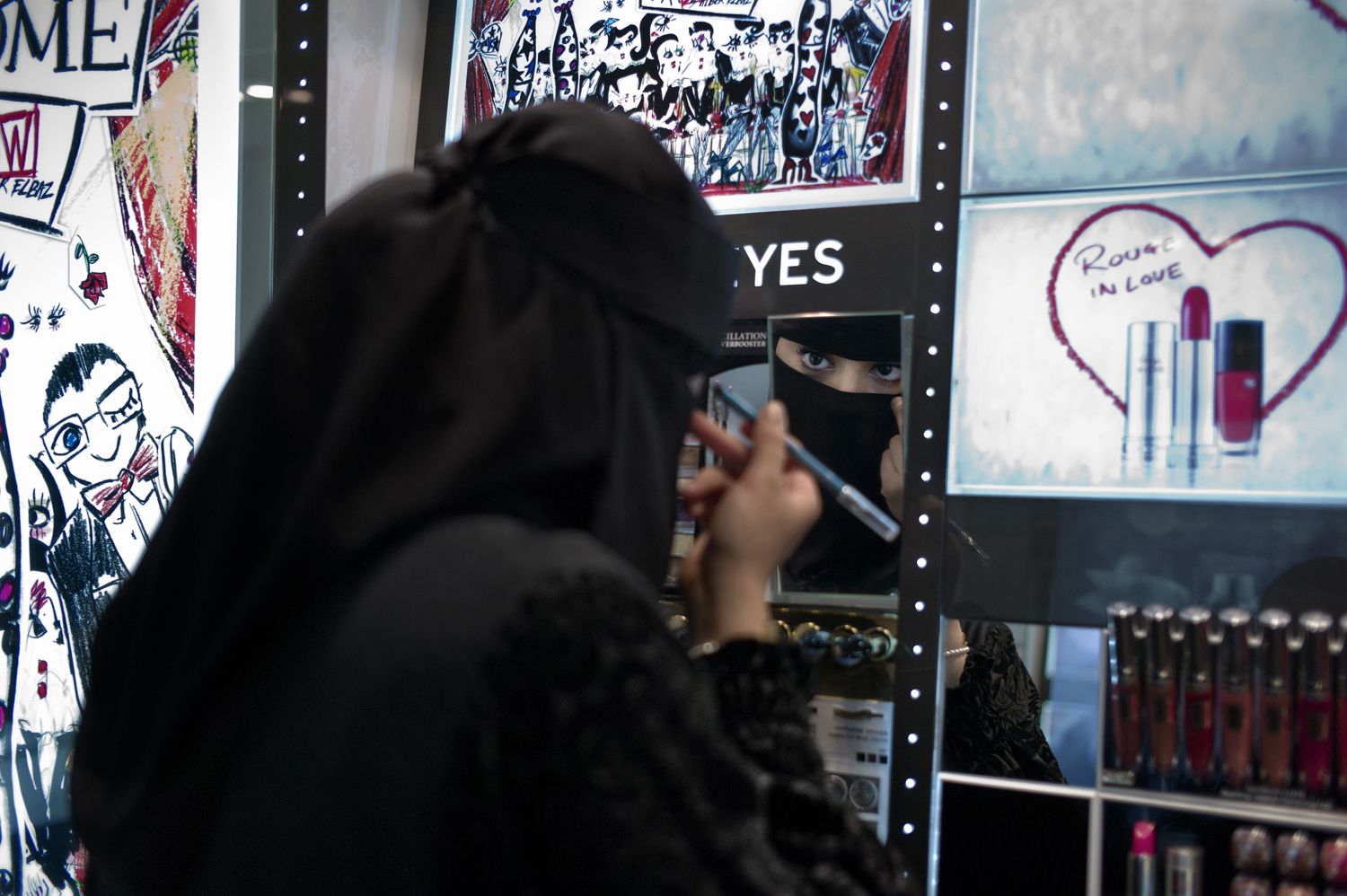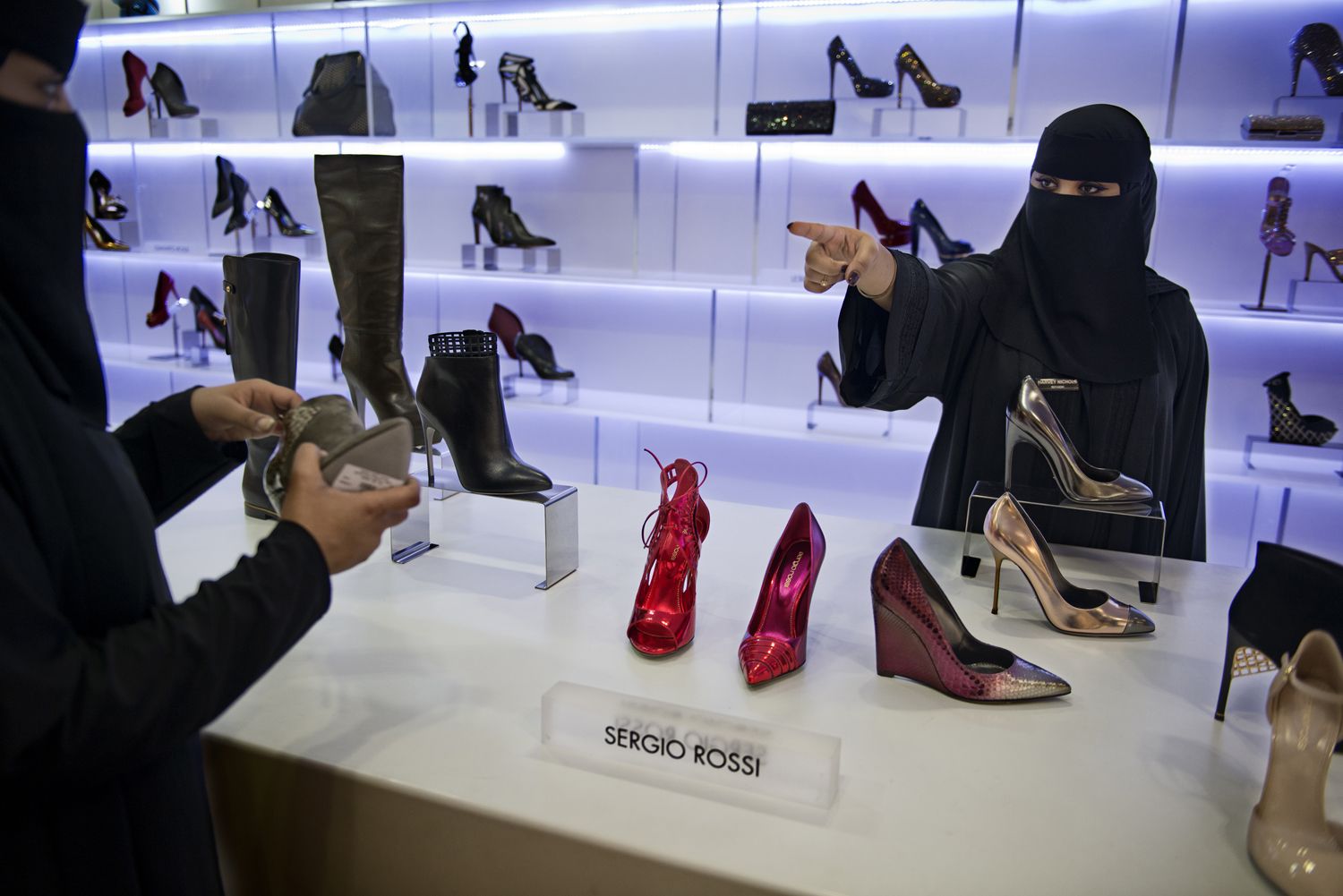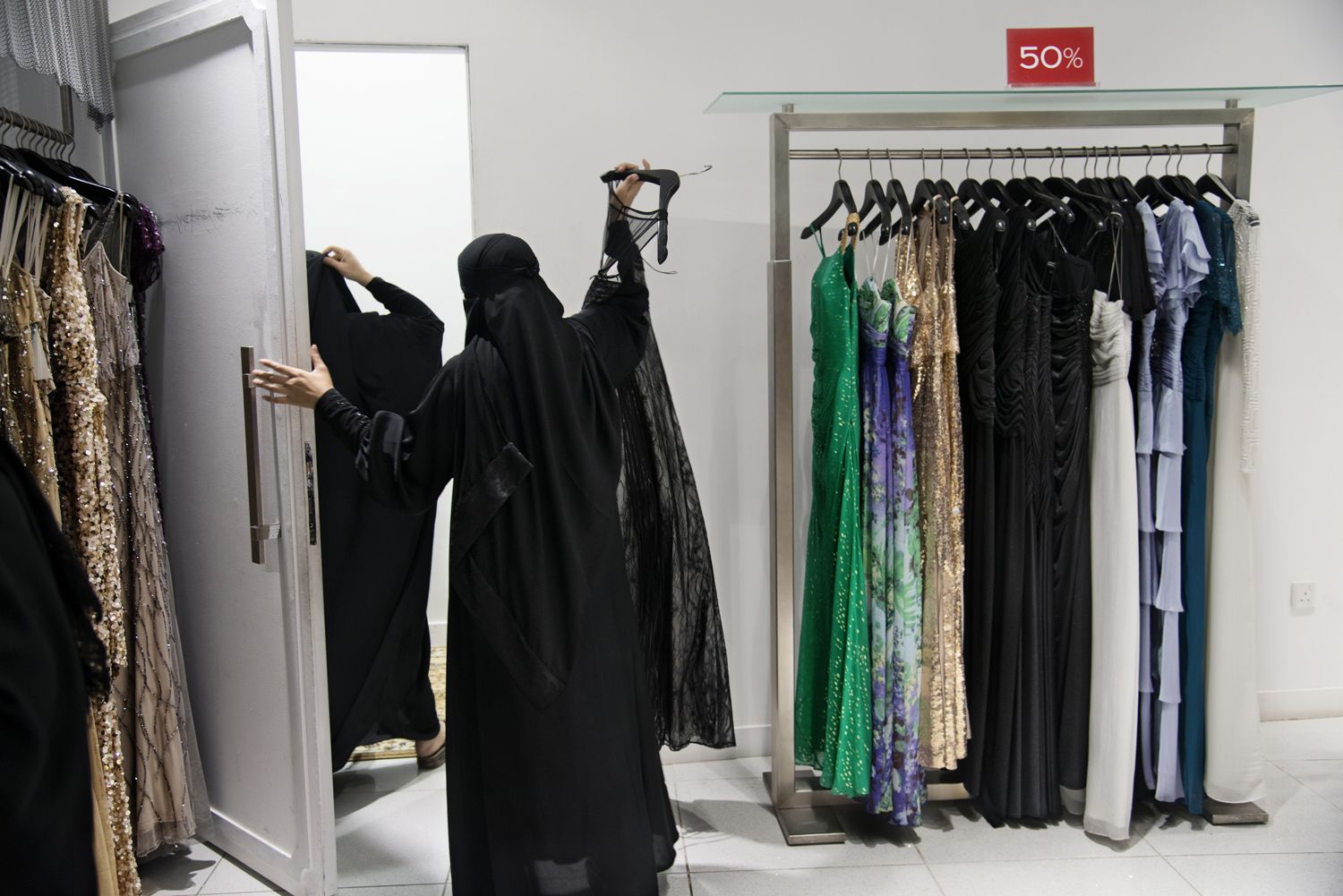From The New Yorker's Photobooth, posted by Elissa Curtis.
In this week’s issue of the magazine, Katherine Zoepf writes about women in Saudi Arabia and their inroads into the country’s traditionally male-dominated workforce. Historically prohibited from driving as well as from working, women in Saudi Arabia have built a movement to loosen female-labor laws. As Zoepf writes, “For the first time, they are interacting daily with men who are not family members, as cashiers in supermarkets and as salesclerks selling abayas and cosmetics and underwear.”
“Feminization” is the term for a gradual women’s liberation movement that the photographer Kate Brooks calls “the Arab Spring’s silent revolution.” Brooks has worked for many years in Saudi Arabia and has made several trips there to photograph the changing roles of women. “For me, the fascination with Saudi women isn’t in how they are dressed but, rather, in the stories they keep bundled up—close to their hearts—under their abayas, which give us understanding of what it is to be a woman in Saudi society,” she told me. “Their desire for more independence, economic freedom from their husbands, their developing sense of rights, and the fact that they want to be able to independently provide for themselves and their children are all inherent to the Saudi’s women’s-rights movement.”
